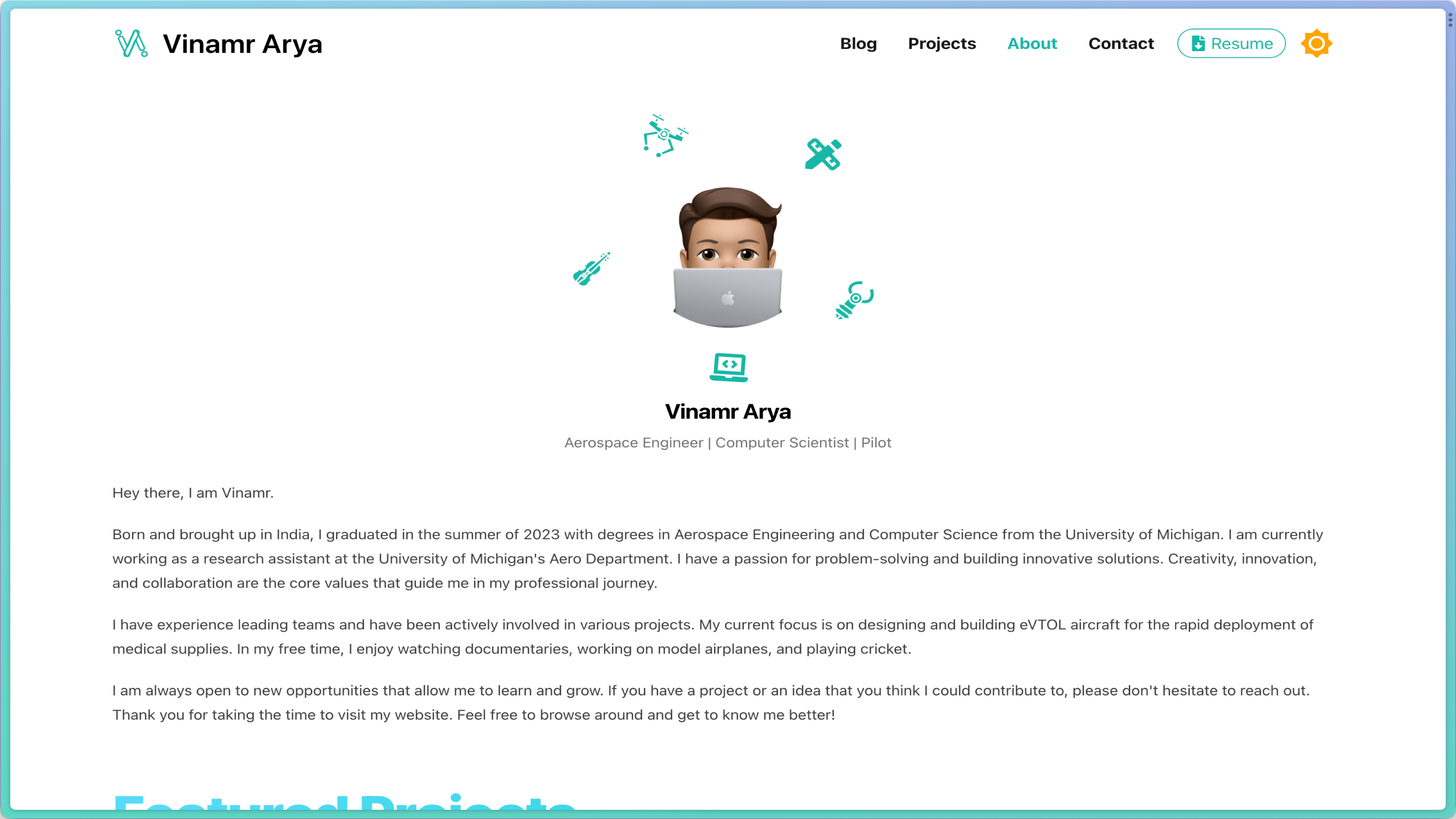- Published on
Portfolio Website
- Authors
- Name
- Vinamr Arya

Introduction
Creating a portfolio is often seen as a straightforward task—showcase your work, list your skills, and provide a way for people to contact you. However, the process of building my portfolio was anything but simple; it was a journey of self-discovery and skill mastery. From the initial planning stages to the final deployment, every step was a learning experience. In this post, I'll walk you through the architecture, features, and technologies that make up my portfolio.
The Architecture
The portfolio is built on Next.js, a React framework that offers features like server-side rendering and static site generation. This choice was motivated by the need for performance and SEO-friendliness. The project is structured meticulously, with each component and utility having its dedicated file and purpose. For instance, LayoutWrapper.js serves as the layout component that wraps around the main content, providing a consistent structure across pages. On the other hand, utility files like formatDate.js and kebabCase.js handle specific tasks like date formatting and string conversion, respectively.
Frontend Components
The frontend is where the magic happens. Components like Card.js and FeaturedProject.js are the building blocks of the portfolio. The Card.js component is versatile, rendering individual cards that can be used to display projects, blog posts, or any other content. FeaturedProject.js is used to highlight certain projects, giving them a platform to shine. These components are styled using Tailwind CSS, a utility-first CSS framework that allows for rapid UI development.
User Experience
User experience was a top priority, and several features were implemented to enhance it. The ThemeSwitch.js component allows users to toggle between light and dark modes, offering a more personalized browsing experience. The portfolio also integrates Disqus for comment functionality, providing a platform for visitors to share their thoughts and feedback.
Analytics and SEO
Understanding user behavior is crucial for any website. The portfolio integrates Google Analytics through the GoogleAnalytics.js component, offering insights into user behavior and interaction. SEO is managed by the SEO.js component, ensuring that the portfolio ranks well on search engines and reaches a wider audience.
Graphics and UI Design
One of the most rewarding aspects of this project was the opportunity to create all the graphics and UI designs myself. From the color scheme to the layout, every design element was carefully chosen to create a cohesive and visually appealing experience.
Conclusion
Building this portfolio was not just about showcasing my skills and projects; it was a comprehensive learning experience that pushed me to explore new technologies and think critically about design and user experience. It serves as both a representation of my abilities and a testament to my journey as a developer and designer. Whether you're a potential employer, a fellow developer, or a curious visitor, I hope this portfolio offers you a glimpse into my skills and passions.